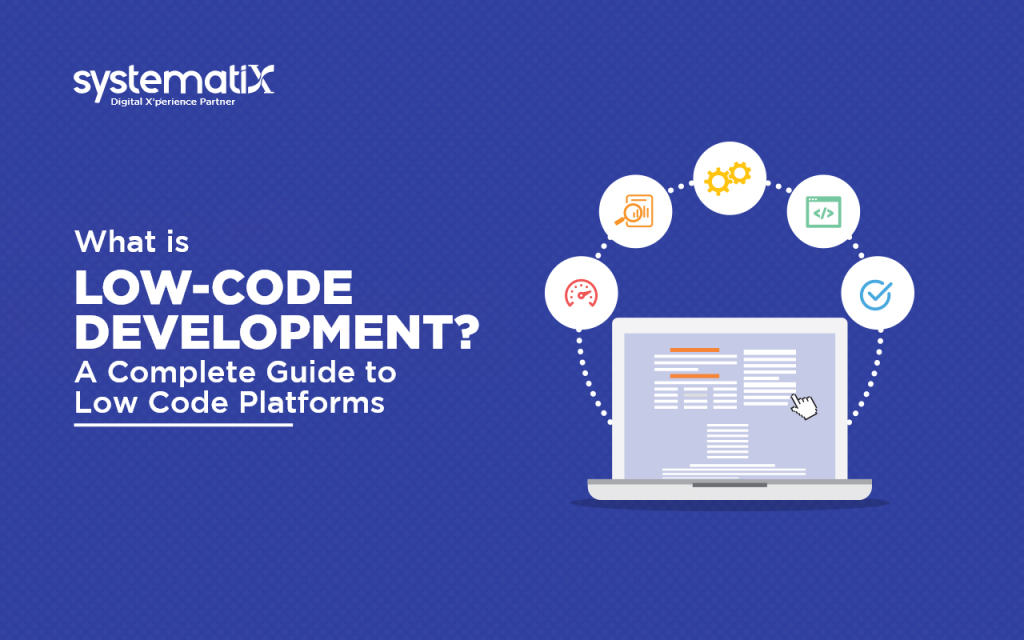Looking for a simple and easy way to build systems and applications? For the best results, low-code upgrades are the ultimate solution. In this post, we will help you find out about low-code upgrades and how you can benefit from low-cost platforms.
What is a Low Code?
In the fast-growing digital age, every business is looking forward to emerging and competing with faster digitalization. Whether small or large, each organization understands the need for digital business throughout the business. An organization that uses conventional methods may find it difficult to meet the needs of an ever-growing business.
Businesses that have begun to use advanced technologies such as Machine Learning can consider using low code application development platform For Banking and enterprises and low-code promotion services. In addition to bringing overall ease of use, low code application upgrades help speed up the process. This is because you do not have to write all the code by hand.
Low code can be considered as a visual way to be sure to upgrade software that helps in optimizing all the software upgrade features. It also helps to speed up the delivery of the software. With the help of a lower code, you are able to uninstall and automate each step of the software application lifecycle. It enables the configuration of the transmission of the total configuration.
As you break down the familiar silos of IT and business, your company may consider designing solutions to meet the unique needs of your business. Low code can be considered as an alternative agile alternative to conventional software upgrades. Both non-professionals and experts can expect to create complex applications to meet the business requirements such as digital transformation promotion and process automation.
What is Low-code Application Development?
Low cost web upgrade software upgrade systems are gaining momentum in the modern era. Low code needs to be limited to no code for user development and functionality. The low-code upgrade platform will make use of visual cues with the help of drag-and-drop files and easy logic even after different coding languages. These intuitive tools allow users with no coding experience or software development to create multi-purpose applications — including mobile and business applications.
Advanced Benefits of Low-Coding Application Improvement
Gone are the days when it was necessary to have code information in order to be sure to promote the application. Nowadays, both non-designers and manufacturers can create seamless business-grade applications. Without the need for coding, you can easily create a collaborative and user-friendly application. Low-code application platform promotion is the solution.
With the use of the low-code upgrade platform for application development, your organization can transform IT and business strategies into a functional app within minutes. The demand for no-code or low-code increased significantly recently. According to the study, it is estimated that the no-code move will be worth $ 21.2 billion by 2023.
Some of the benefits of low-code mobile app improvements are:
Reduced Storage Responsibility: Low-code upgrade software reduces the overall load load. It is achieved by eliminating complex patterns of daily production. As the components have been pre-configured, pre-configured, and configured, there are fewer integration issues and bug fixes to deal with. As less time is spent on repairs, manufacturers are able to focus on the task of improving driving business size.
Democratization of Software Development: Will give users access to a business or technical experience – including Machine Learning, data analysis, or rapid app upgrades due to flexible learning curve. You no longer need to be an experienced or experienced developer to use skilled systems and tools to improve the system.
Improved Product in Whole Group: Low-code upgrade software helps in closing existing badges between business and IT teams. In this way, both parties are able to resolve the very issues that affect the organization. Business teams can process their requests without waiting for developers. As the task of creating complex codes is eliminated, it contributes to further improvements in access to other team members – regardless of expertise. This improves the levels of success within the teams. It is possible to start and repeat new ideas successfully.
Traditional Vs. Low-code Development -What to Choose?
Every organization out there has a fixed set of issues that require cultural adjustment. Improved traditional app has the ability to deliver custom applications. As such, these projects often require additional budget, more time to upgrade, more sales time, and regular maintenance. This is the reason why a number of brakes do not like the traditional option of application upgrades.
On the other hand, compare Low code pricing mendix vs powerapps vs outsystems vs Wavemaker and low-code application enhancement provides assistance to businesses with the appropriate tools to develop app development strategies. In addition, it promotes overall productivity and efficiency within the organization. Here are some parameters you can distinguish between low-code and traditional software upgrade features:
Agility
Low code: You can use low-code platforms easily with the help of pull-and-drop functionalities.
Traditional coding: No delay. This is because of the combination of the hardest coding codes. This makes it more time-consuming to learn and adjust.
Price
Low-code: There is a fee to get on the platform -not for the method of improving the application.
Traditional coding: There is a combination of advanced processing and rental costs.
Skills
Low-code: Low-code platforms usually do not require any technical skills. While there are not many tools and functions, still low-code upgrades allow worry-free software upgrades.
Traditional coding: Provides access to a number of tools and tools to come up with complex applications.
Maintenance
Low-code: Here, platforms run by a business hold the owner of that low-code platform.
Classic coding: These platforms require in-house or third-party development team to ensure project optimization.
Characteristics of use
Low-code: Generally, no-code or low-code platforms do not come with any bug-related problems. Classic coding: There may be bugs or errors due to the complexity and functionality included in the app upgrade process. It makes the platform difficult to use with end-users.


